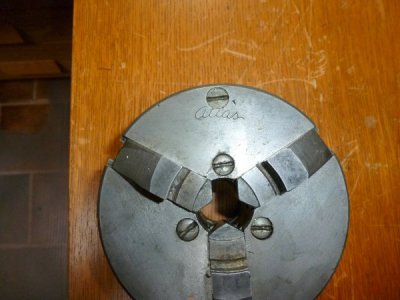- Joined
- Jan 15, 2013
- Messages
- 171
thanks for the feedback, and the exploded view Peter I'm going to try press one out and see what happens Ive got a 12 tons press so Ill let you know how it works
Art B
Art B
AFAIK, Atlas didn't make motors and they didn't make chucks.

Art, I have the same problem with one of my jaws. I don't think your adjusting holes are rounded out, I think that there was a thin round four sided piece of metal that the chuck key fits into that is broken off the top leaving only a hole in the center of the screw. That is what I found when I looked at mine. If you look at your screw from the front of the chuck you will see a space where there are no threads near the edge of the chuck. If you look on the backside you will note the plugs are right under the "space". Back looking from the front, you will see two ends of metal, one on each side of the space that look like they are grasping the screw. I took a small thin punch and taped back and forth on the ends of metal and it easily moved the plug out. I found that you don't need to completely remove the plug to get the screw out, therefore no problem in replacing it.I just put the 4 jaw chuck on my 12x36 craftsman commercial lathe for the first time and when I started to adjust it, I found that the square adjusting holes were all rounded out and non adjustable. Has any had this problem, are their any suggestions as to how to resolve it. can the screw plugs be removed so the screws can be taken out.
art b
